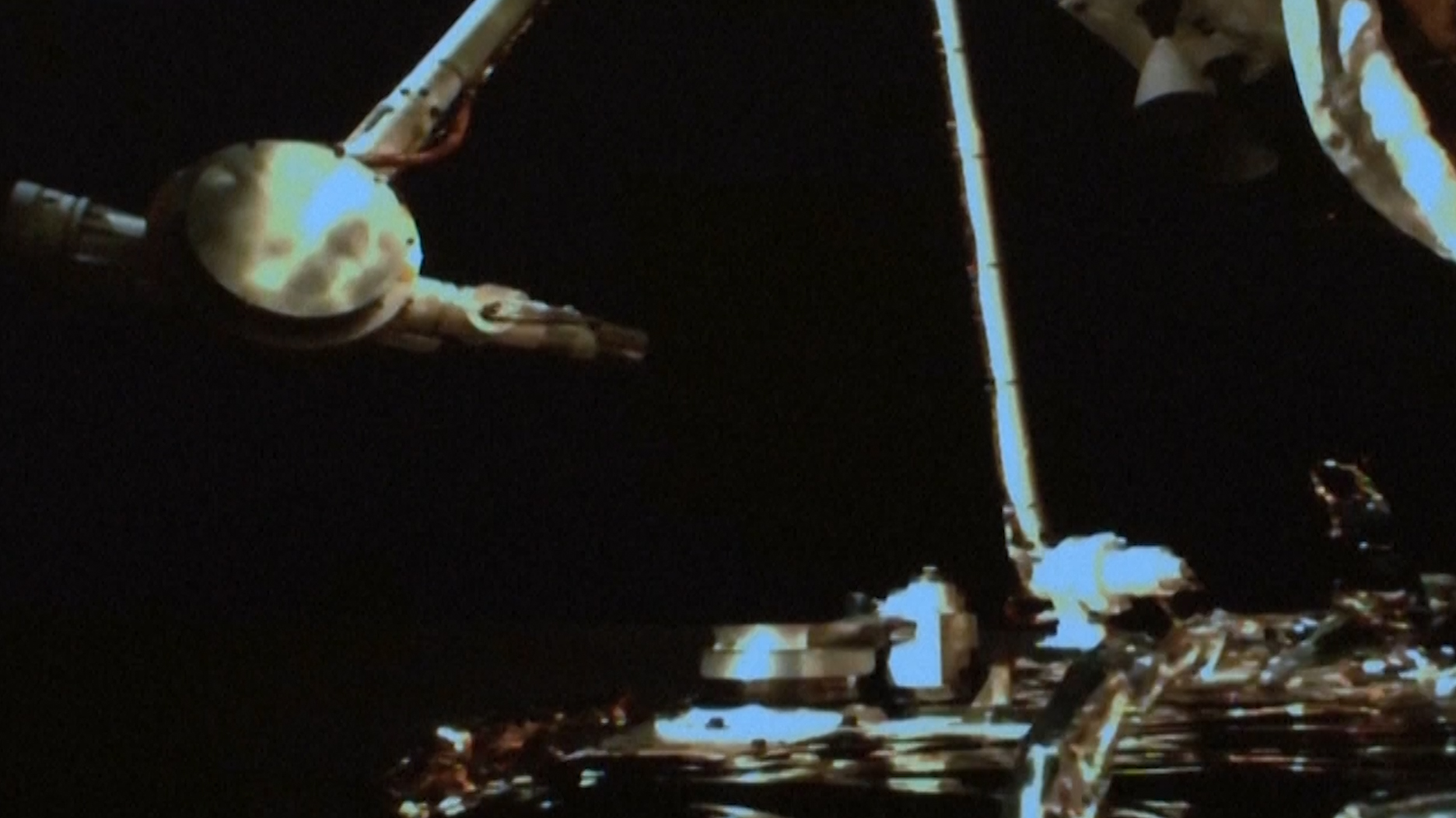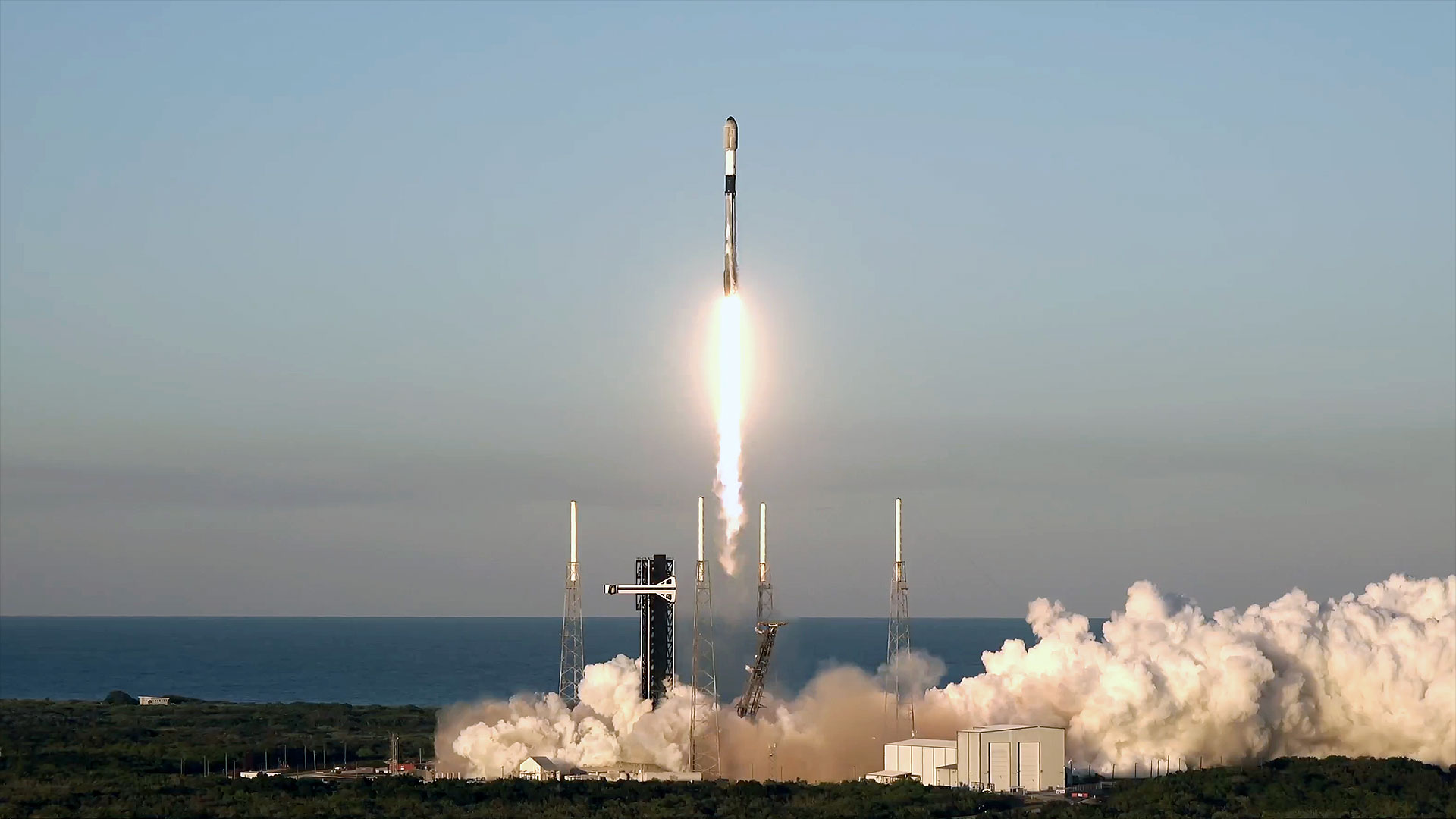China's moon sample-return mission finds water evidence twice over
China's Chang'e 5 lunar landing and sampling mission found water on the moon both through on-site analysis and in materials delivered to Earth.
The daring Chang'e 5 mission touched down on the moon in December 2020, drilling down for and scooping up the youngest lunar samples ever collected. Soon after, an ascent vehicle blasted off from the mission's landing site in Oceanus Procellarum (the Sea of Storms), and Chang'e 5's samples returned to Earth later in the month. Scientists have now revealed that the lander's spectral scan of the surface and analysis of the samples in laboratories on Earth both show the presence of water in the region.
"For the first time in the world, the results of laboratory analysis of lunar return samples and spectral data from in-situ lunar surface surveys were used jointly to examine the presence, form and amount of 'water' in lunar samples," co-author Li Chunlai, a planetary scientist at the National Astronomical Observatories of the Chinese Academy of Sciences (NAOC), said in a statement.
Related: Amazing panorama shows China's Chang'e 5 landing site on the moon (photos)
But the results certainly don't point to vast reservoirs on the lunar surface. Rather, the results show that, on average the rocks and soil of the moon's surface contain about 30 hydroxyl parts per million; hydroxyl, with one oxygen atom and one hydrogen atom, is the main ingredient of water.
The team also assessed the water source to be mainly indigenous to the moon, contained in a crystalline mineral called apatite. Less hydroxyl than expected appears to have come from the solar wind, the constant stream of charged particles flowing off the sun and across the solar system, which barrages the moon and implants its surface with particles.
"The results accurately answer the question of the distribution characteristics and source of water in the Chang'e 5 landing zone and provide a ground truth for the interpretation and estimation of water signals in remote sensing survey data," Li added.
Breaking space news, the latest updates on rocket launches, skywatching events and more!
The results were published in Nature Communications on Tuesday (June 14).
Li said future Chang'e missions will also focus on water to build a bigger picture of lunar water, and particularly on potential water-ice at the lunar south pole with Chang'e 7.
Follow us on Twitter @Spacedotcom and on Facebook.

Andrew is a freelance space journalist with a focus on reporting on China's rapidly growing space sector. He began writing for Space.com in 2019 and writes for SpaceNews, IEEE Spectrum, National Geographic, Sky & Telescope, New Scientist and others. Andrew first caught the space bug when, as a youngster, he saw Voyager images of other worlds in our solar system for the first time. Away from space, Andrew enjoys trail running in the forests of Finland. You can follow him on Twitter @AJ_FI.

